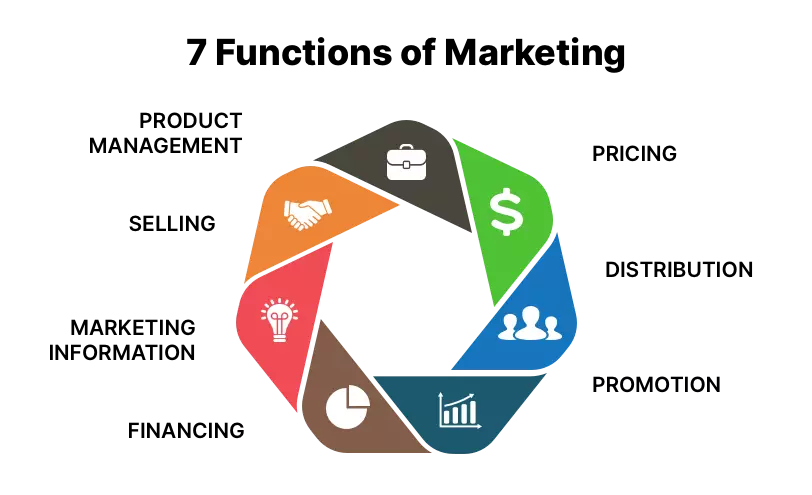We know a lot about marketing, its different aspects and strategies. But why do we actually do marketing? What is the purpose of all marketing efforts taken? At first thought, the answer is simple: sell more. However, marketing is much more than that. We have to consider a spectrum of seven functions of marketing to find an answer for the question of the purpose of marketing. These functions define all the aspects that are part of the practice of marketing. In this article, we will take a closer look at the seven functions of marketing.

Distribution
Distribution is the process of deciding how to get goods in customers’ hands. Although you would not directly relate it to marketing, it is an essential function of marketing: without distribution, the value does not end where you intend it to be. Physically moving and storing goods is part of distribution planning. The main methods of transportation are by truck, rail, ship, or air. Some large retail chains store products in central warehouses for later distribution. Distribution also involves the systems that track products so that they can be located at any time.
Financing
Financing is getting the money that is necessary to pay for setting up and running a business. Why is it one of the seven functions of marketing? Indeed, there is a close relationship between marketing and finance. None can stand without the other: Without marketing, the company does not deliver value to customers and does not sell its products. As a consequence, there are no profits and no need for finance.
Business owners often obtain bank loans to start a new business. Some also form corporations and may sell shares (or stock) of the business. Financing also involves decisions such as whether to offer credit to customers. Most retailers offer customers payment options such as MasterCard or Visa, while other stores offer their own credit services.
Marketing Information Management
Sound business and marketing decisions rely on rich information about customers, trends, and competing products. Gathering this information, storing it, and analyzing it are part of marketing information management. Collecting information is done on a continual basis and through special marketing research studies. This is what marketers do to find out about customers, their habits and attitudes, where they live, and what trends there are in the marketplace. Companies conduct research so they can be successful at marketing and selling their products.
Pricing
Pricing is one of the seven functions of marketing that you also find in the marketing mix. Pricing decisions dictate how much to charge for goods and services in order to make a profit. Pricing decisions can be based on costs, competitors‘ prices, and value delivered to customers. To determine a price, marketers nowadays for most products need to determine how much customers are willing to pay.
Product Management
Product management is obtaining, developing, and improving a product or a product mix in response to market opportunities. An important part of it is New Product Development. Why is it related to marketing? Well, first of all, a product is the core means of delivering value to customers. In addition, marketing research guides product management towards what the consumer needs and wants.
Promotion
Promotion is the effort to inform, persuade, or remind potential customers about a business’s products or services. As such, it plays a key role in communicating value to customers, which makes it part of the seven functions of marketing. Online ads, television and radio commercials are forms of promotion. This type of promotion is called advertising. Promotion is also used to improve a company’s public image. In this case, it is referred to as PR (Public Relations). A company can show that it is socially responsible by recycling materials or cleaning up the environment. Promotion concepts and strategies are used to achieve success in the marketplace.
Selling
Selling provides a key link between creation of value and delivery of value to the customer. It reflects the change of ownership of value and provides customers with the goods and services they want. This includes selling in the retail market to you, the customer, and selling in the business-to-business market to wholesalers, retailers, or manufacturers.
Selling techniques and activities include determining client needs and wants and responding through planned, personalized communication. The selling process influences purchasing decisions and enhances future business opportunities.






